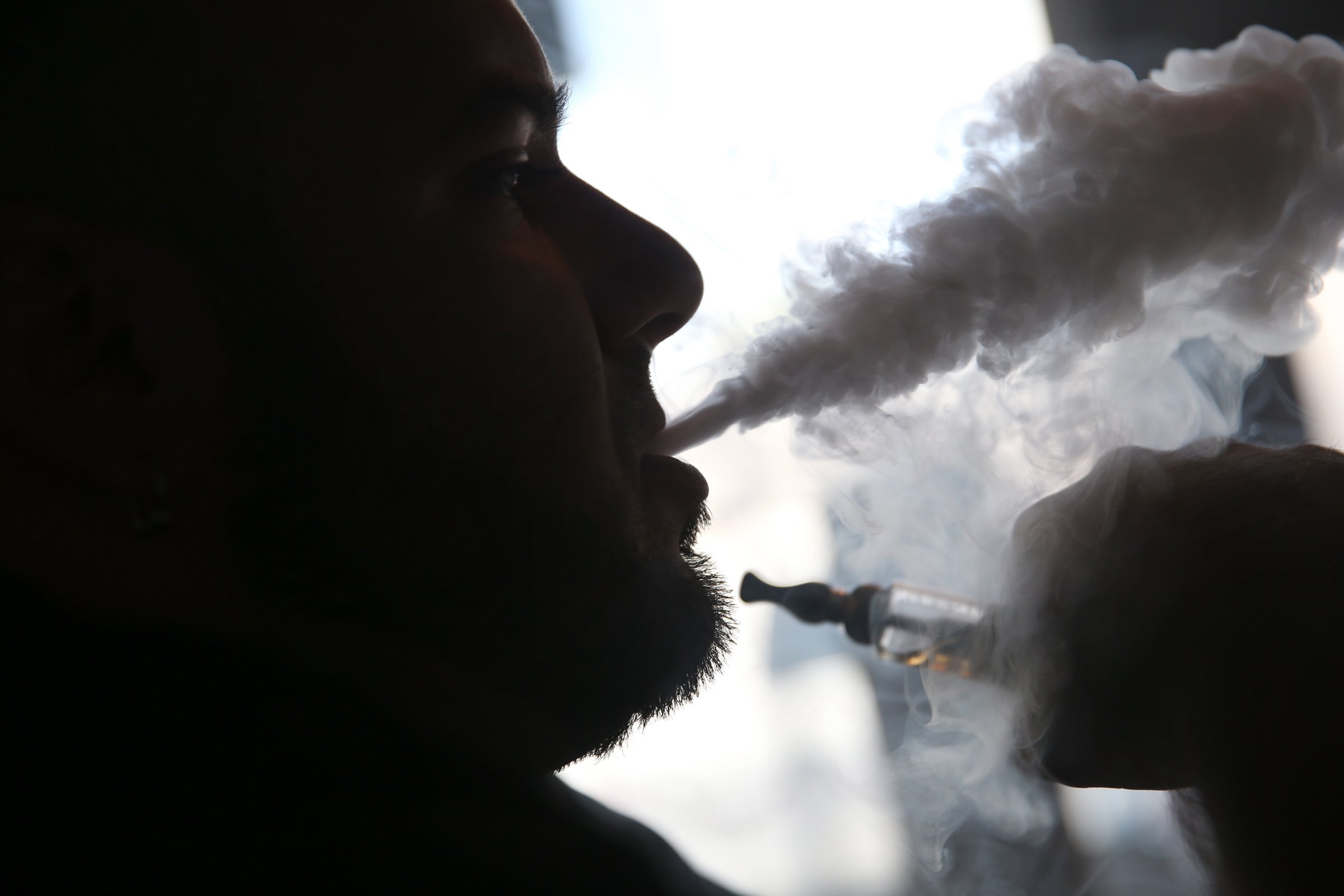
E-cigarettes are everywhere—and are reportedly quitters’ favorite tool with some experts claiming it’s a healthy alternative to traditional tobacco. But vaping doesn’t deserve its health halo, says the American Heart Association (AHA) in a policy statement released today in its journal Circulation.
The group calls for an overhaul of how we deal with e-cigs, advocating for stricter laws, industry oversight by the government, and more rigorous research.
Right now, e-cigs are a Wild West industry, with 10 new companies coming to market every month. The FDA doesn’t yet regulate them—though the agency plans to—fueling concerns about possible contaminants, quality control, labeling, and marketing. There’s not much research about the public health impacts of e-cigs. Yet they’re a big business, and sales are expected to rake in $10 billion by 2017, according to predictions by Wells Fargo.
Many people use e-cigs, many of which contain nicotine but not tobacco, to wean themselves off of cigarettes. Their reputation as cigarette-cessation tools is widespread—though more research is needed to see if that reputation is warranted. “We don’t have much data on the efficacy as a cessation aid,” lead author Aruni Bhatnagar, chair of cardiovascular medicine at the University of Louisville, tells TIME. E-cigarettes aren’t approved by the FDA as tools to help people quit, and the AHA says that there’s a lack of evidence that they actually work for that purpose. However, some studies suggest e-cigarettes may perform as well or a bit better than nicotine patches, so they should be viewed as a last resort when other methods fail.
Another concern is marketing to young people. Television ads for e-cigarettes reached an estimated 24 million youth between 2011 and 2013, the AHA report says. And a separate CDC study released today in the journal Nicotine and Tobacco Research found that more than a quarter of a million youth who’ve never tried a cigarette puffed the electronic version in 2013. That’s a three-fold increase from 2011-2013.
“We have grave concerns about industry marketing and advertising of e-cigarettes to children,” Bhatnagar says. The AHA is calling for a federal tax on e-cigarettes, which may help deter young would-be adopters, in addition to a ban on flavorings. (E-cigs come in more than 7,000 flavors like mint and chocolate, which tend to appeal to younger users.) And while many states ban the sale of e-cigarettes to minors, the AHA is calling for a federal ban on the sale to minors.
Walk into any smoke-free area and you’re bound to encounter e-cigarettes—another fact the AHA wants to change by subjecting e-cigarettes to the same laws as tobacco products. On Monday, Toronto joined the growing list of cities banning e-cigs in the workplace.
There’s still a lot we don’t know about e-cigarettes, including how chemicals and nicotine interact with the environment and bystanders, and normalizing smoking behavior undoes years of anti-smoke crusading, the AHA says. So the group recommends that e-cigs be classified as tobacco products to subject them to the same smoke-free air laws.
“We don’t have much data on what their long-term health impact is going to be,” Bhatnagar says. “It will be five to seven years before we know what happens to cardiovascular health.”
More Must-Reads from TIME
- Why Biden Dropped Out
- Ukraine’s Plan to Survive Trump
- The Rise of a New Kind of Parenting Guru
- The Chaos and Commotion of the RNC in Photos
- Why We All Have a Stake in Twisters’ Success
- 8 Eating Habits That Actually Improve Your Sleep
- Welcome to the Noah Lyles Olympics
- Get Our Paris Olympics Newsletter in Your Inbox
Write to Mandy Oaklander at mandy.oaklander@time.com